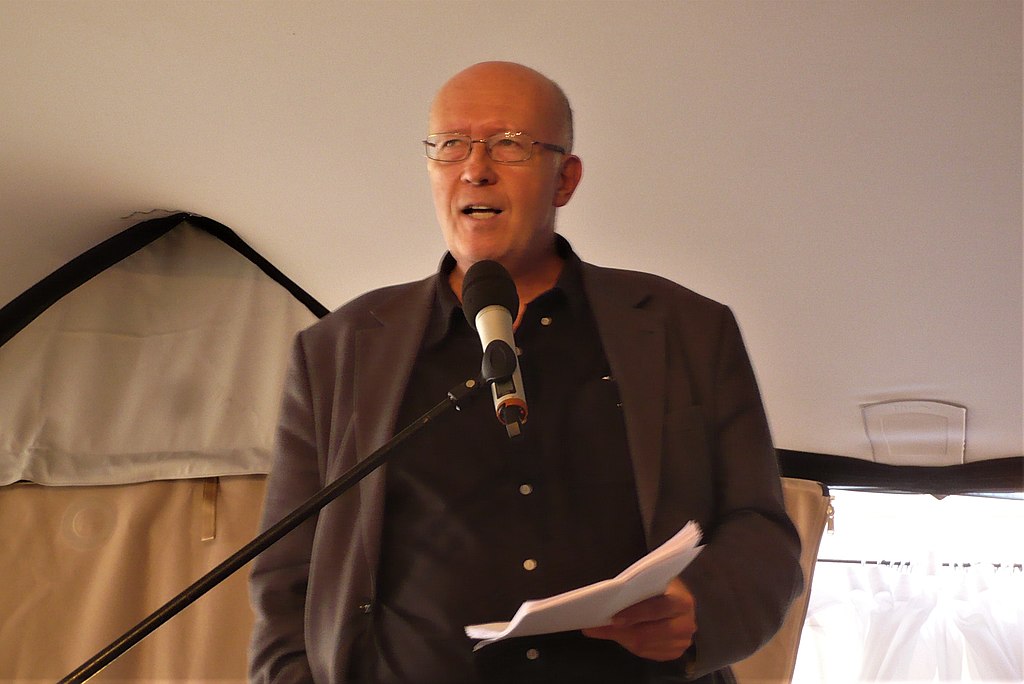Waiting for a reflection. Manipulations and false accusations against Poland (Part 1)

It is probably a sort of naivety, but I am constantly amazed at the level of aggression directed against the Polish state in matters relating to the commemoration of Nazi victims. This aggression manifests itself primarily in the excessively frequent repetition of false information, which becomes the basis for critical actions, often later subjected to internationalization.
Tomasz Rowiński
Recently, the Swedish daily “Dagens Nyheter” published an article by prof. Jan Grabowski and Katarzyna Markusz criticizing the participation of Deputy Prime Minister Piotr Gliński in the International Forum for Holocaust Remembrance and Combating Antisemitism, which took place in Malmö in the first half of October. Although this text presented Poland as an anti-Semitic dictatorship, the newspaper refused to publish the polemics to representatives of the Ministry of Culture and National Heritage. At the same time, someone inspired prof. Eliyana Adler not to accept the Witold Pilecki award. The statement of the American professor on this matter was published on jewish.org, of which Katarzyna Markusz is the editor-in-chief. Recently, another scandalous case involving prof. Jan Grabowski.
NEW SCHOOL OF HOLOCAUST HISTORY
As part of its action “Called by their names”, on November 25th of this year – Railway Man’s Day – the Pilecki Institute in Treblinka commemorated Jan Maletka, a young railway worker who was shot by the Germans on August 20th, 1942 for giving water to imprisoned Jews. A stone was placed in the village to commemorate this event. What is the “Called by their names” program? Dr. Anna Stróż-Pawłowska, head of the Department for “Called by their names” at the Pilecki Institute, spoke about it some time ago: “As part of the ‘Called by their names’ program, we usually commemorate those Poles who were murdered for providing long-term help to Jews, mostly shelter”. In the same statement, Stróż-Pawłowska added that “there are also stories in which death was the punishment even for one-off, temporary gestures, answers to a momentary need”. One of such cases is the tragic fate of Jan Maletka.
Upon receiving the information about the commemoration of the Polish railway man, prof. Jan Grabowski reacted with an aggressive post on social media. Perhaps if the information contained in it were true, the harshness of the statement could be understood. But it wasn’t.
“In many Jewish and Polish testimonies, we can read about Poles selling water to Jews transported on death trains to Treblinka. The prices were excessive. Diamonds, gold, and money changed hands. Some of these Poles were shot by Ukrainians who were guarding the trains. Today, the infamous Mrs. Magdalena Gawin, the Polish minister of culture and the person responsible for the Pilecki Institute, unveiled a monument honoring a Pole who was shot “for bringing water to the death trains”, wrote Grabowski. In this clever statement, no direct accusation was made against Jan Maletka, but a shadow was clearly cast not only on the killed railway man, but also on all Poles who tried to help Jews sent to extermination camps. What is the meaning behind the words of prof. Grabowski? The Pilecki Institute commemorates a szmalcownik1. The rhetorical expansion of Poles’ responsibility for the situation of Jews during the German occupation is one of the methods that are often used by the representatives of the “new Polish school of Holocaust history”.
RADIO EREWAN
The desire to defame the Institute led by Dr. Wojciech Kozłowski is also found in another fragment of the opinion of prof. Grabowski. He alleges that, “the Pilecki Institute’s campaign was aimed at distorting the history of the Holocaust”. This verbal abuse is not all, however. More serious in this particular case was Grabowski’s false information about the commemoration of the death of Jan Maletka, which resonated widely. Grabowski wrote that the Pilecki Institute erected a monument at the train station in Treblinka in honor of Poles who were killed for saving Jews. This would mean that the “monument” now stands in the camp itself.
The statement by prof. Grabowski is similar to the logic of a joke about Radio Erewan. Firstly, we are not dealing with a monument, but rather a small stone, which – secondly – does not commemorate Poles at all, but one specific individual. And finally, thirdly, the stone is not at the camp station, but in the village of Treblinka, a few kilometers from the former extermination site – today, a museum. “Shame on you, Mrs. Gawin, shame on the Pilecki Institute, shame on Piotr Cywiński [the director of the Auschwitz-Birkenau Museum – editor’s note T.R.], who supports them, and shame on all those who join the choir of distorting and denying the Holocaust” – bellowed prof. Grabowski in subsequent paragraphs of his analysis.
Magdalena Gawin referred to this statement and wrote: “The term monument is misleading. It is a fieldstone with a plaque located in the village. Only the perpetrators of this crime may be offended by the reminder about the costs of aiding Jews […]. She impugns another fake news – there is NO TRAIN STATION in the village of Treblinka, there is an artistic installation commemorating the deportation of Jews to the death camp. […] I am impugning further fake news: the commemorative plaques are personal, they relate to specific people who died for helping others. Contrary to what @jangrabowski repeated on many occasions to foreign scientists – we never said that everyone helped”.
(…)
1 a Polish term that originated during World War II referring to a person who blackmailed Jews who were hiding, or who blackmailed Poles who aided Jews during the German occupation
This article was published in December 2021 in “Do Rzeczy” magazine.


